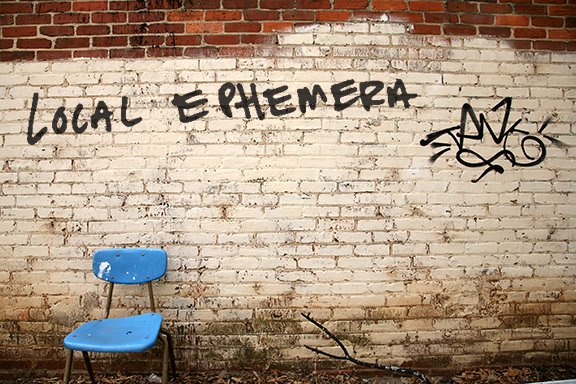
Possibly the most prolific artist in Atlanta, Michi's work seems to be on constant display in one gallery space or another, often partnering up with John Tindel as TindelMichi or recently with Dosa Kim for a show at Beep Beep or in a team of six at Whitespace. But despite the quick succession of works, Michi new solo show, "Comfort Kills Pursuit: Fight!", in Eyedrum's Small Gallery is something altogether new and challenging, electing to focus more on sculptural installation than painting.

In some ways this show is a continuation of Michi's work, expounding on the use of the same tar-like black paint seen in the "Br'er" show, except that this work breaks from of the wood panel surface, breaks from the limitations of more commodified artwork, gets dirtier, drips paint down the walls, and incorporates the exhibition space fully into the work.

There is an interesting dichotomy of purpose in Michi's work that seems particularly at play in this show. The work is not literal (despite using text) and is not easily decipherable but this is because Michi's work speaks to many different plights and many histories at once. Michi deals with the history of racial tensions between white and blacks, "I am fighting for liberation from a history of images that portray black males as strange fruit, machinery, and property." while also existing in this world as a quest-driven artist, and questioning this throughout his work "...have I become comfortable with the idea of art as consumer products and tailored my statements to fit the criteria for success in a commercial gallery society?" After seeing this show, my answer would be "no" and for anyone planning to see this show, or even viewing these pictures, Michi's statement is worth a read.

This piece is fantastic. The gloves representing racial tensions, the legacy of boxing, "The Great White Hope", golden like a bronze trophy of supremacy, but painted, referencing the painter and artistic ambitions.
Statement: "In creative thought, The Great White Hope is the gallery. It is the stage set by its four white corners mimicking the boxing ring. It is an opponent that has eluded many of fighters or artists. We all believe in its mythical power and its collectors’ ringside seats to elevate and hype our careers to the next level just by hanging there."

Perhaps getting further at this idea of "strange fruit," is the amorphous pear/boxing bag that is torn and leaking cotton. There are some more thoughts on the show and an interesting text message interview here.




I left the show still chewing on the idea of artwork that directly references the artist's struggle for success. While this show straddles more difficult issues than just that, Michi views the Small Gallery as a boxing ring in which many different goals and ideologies are being fought for, including the artist's daunting tasks of being recognized and valued. The work serves as a battle cry for artists, an attack on lethargy, which is an essential stance artists must assume, but is the artwork itself the proper platform for the voicing of this? Is this self reflexive subject too insular to function as provoking art? Something to think about anyway.


2 comments:
I stopped by to check this out today. Good stuff from Michi. Its a bit more conceptually specific for him, which I think is a good thing. Its evident that a lot of thought went into the show as a whole, whereas some of his previous work may well have had a good deal of thought behind it, but it's far less aparent.
yeah, this show seems much less about the individual works, and more about the over all concept. Michi's style seems to benefit when unconfined by borders.
Post a Comment